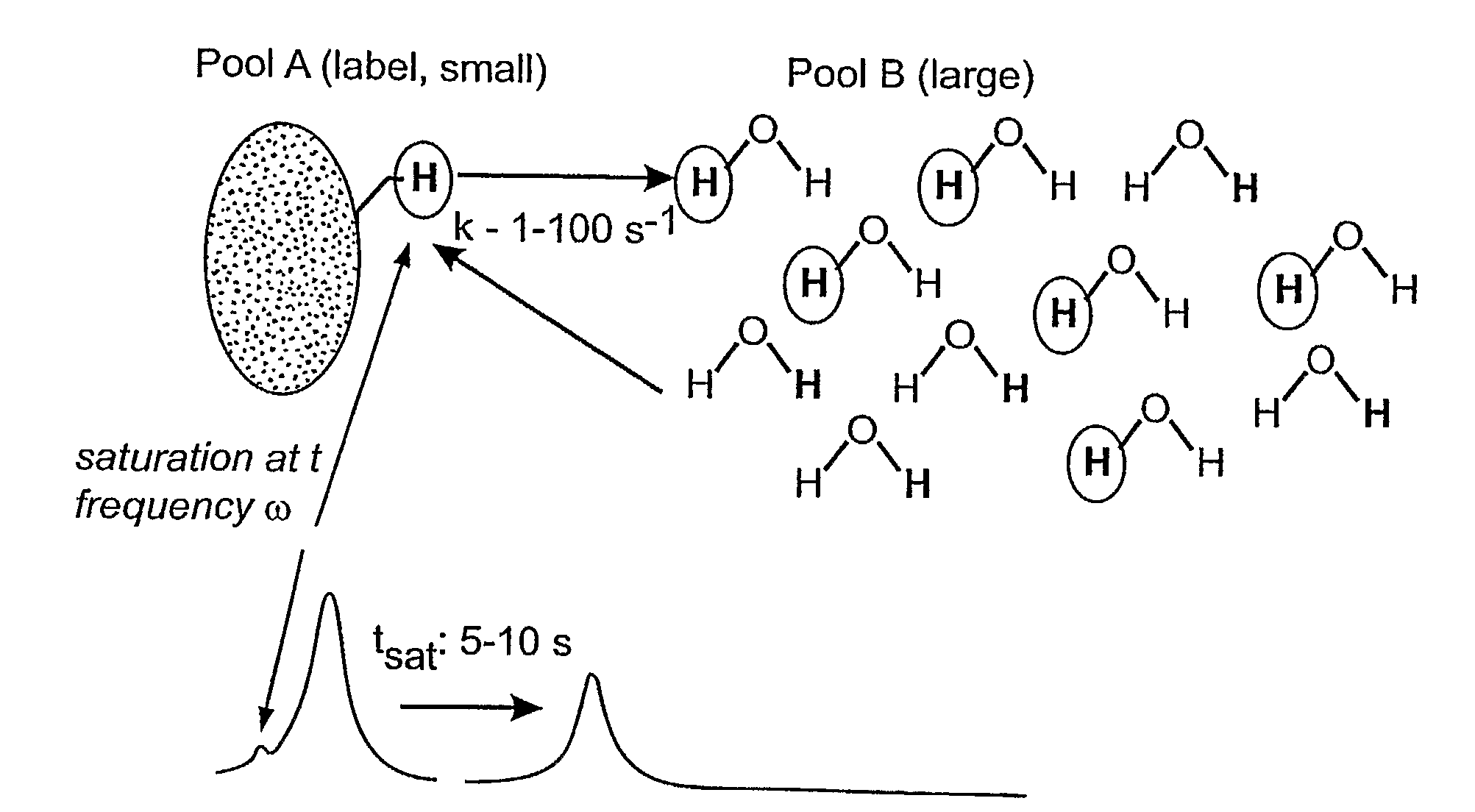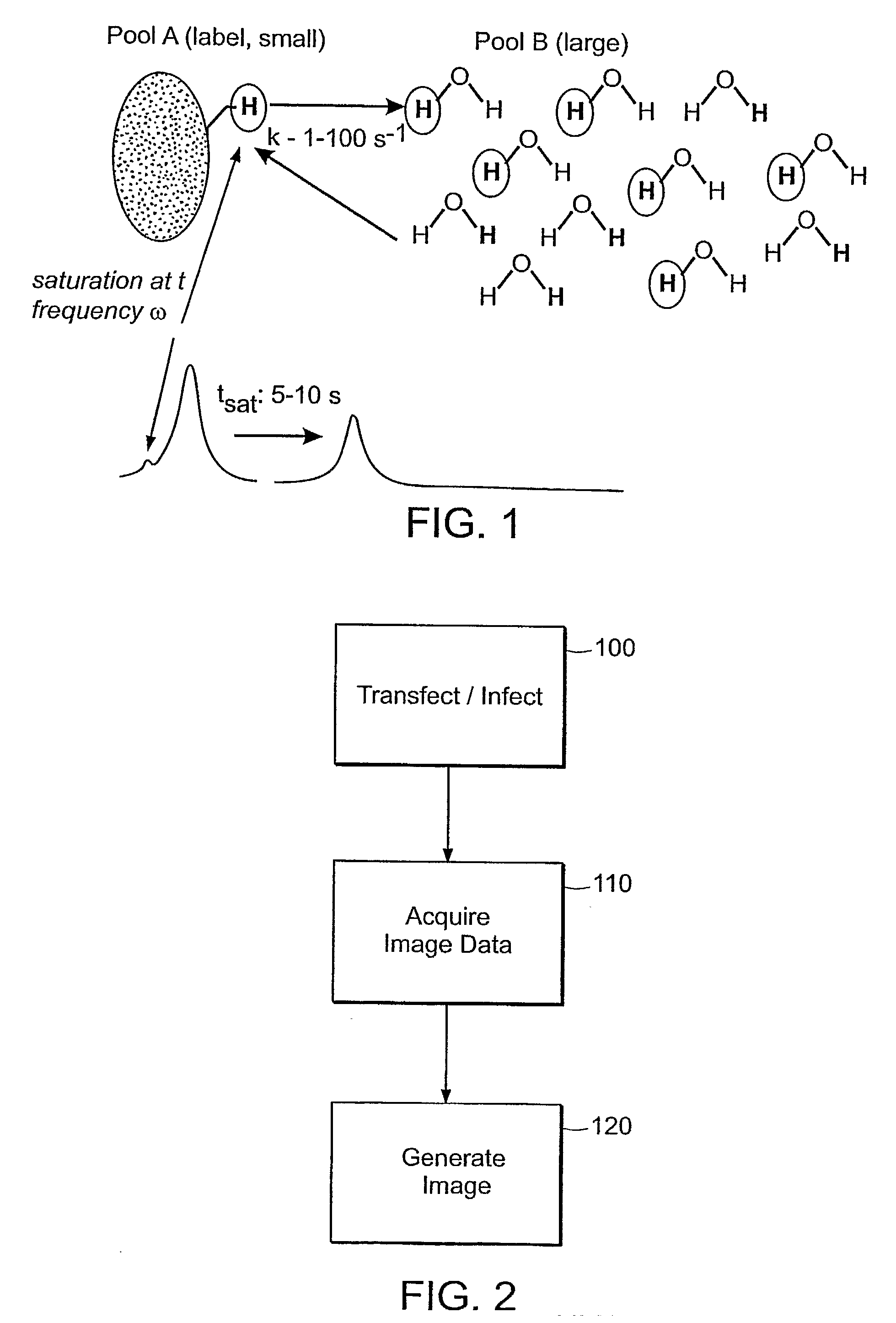Chemical Exchange Saturation Transfer Based Mri Using Reporter Genes and Mri Methods Related Thereto
a technology of chemical exchange and reporter genes, applied in the field of magnetic resonance imaging methods, can solve the problems of low relaxivities, further decrease, and inability to use optical imaging in larger animals such as mammals
- Summary
- Abstract
- Description
- Claims
- Application Information
AI Technical Summary
Benefits of technology
Problems solved by technology
Method used
Image
Examples
Embodiment Construction
[0035]The present invention utilizes the basic capability of cells to over-express polypeptides to design endogenous non-paramagentic MRI reporter genes, whereby tissue or cell contrast can be achieved using the so-called CEST technique of MRI imaging. Such MRI reporter genes of the present invention are general characterized as being switchable (i.e., they can be turned on and turned off by selectively applying RF irradiation at the exchangeable proton resonance frequency) and providing contrast after application of an off-resonance saturation RF pulse. This will not interfere with other high resolution MR imaging pulse sequences. In addition, the different reporter genes are such as not to interfere with one another as well.
[0036]In the CEST technique, selective RF saturation of the amide protons embodied in the endogenous MRI reporter genes is transferred to the water protons via exchange. Such MRI reporter genes include those which are lysine or argenine rich proteins (LRP or AR...
PUM
| Property | Measurement | Unit |
|---|---|---|
| time | aaaaa | aaaaa |
| volume | aaaaa | aaaaa |
| volume | aaaaa | aaaaa |
Abstract
Description
Claims
Application Information
 Login to View More
Login to View More - R&D
- Intellectual Property
- Life Sciences
- Materials
- Tech Scout
- Unparalleled Data Quality
- Higher Quality Content
- 60% Fewer Hallucinations
Browse by: Latest US Patents, China's latest patents, Technical Efficacy Thesaurus, Application Domain, Technology Topic, Popular Technical Reports.
© 2025 PatSnap. All rights reserved.Legal|Privacy policy|Modern Slavery Act Transparency Statement|Sitemap|About US| Contact US: help@patsnap.com



